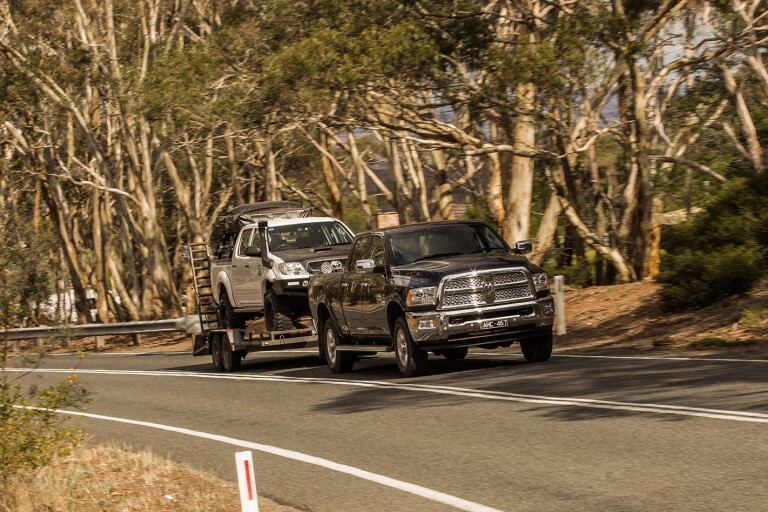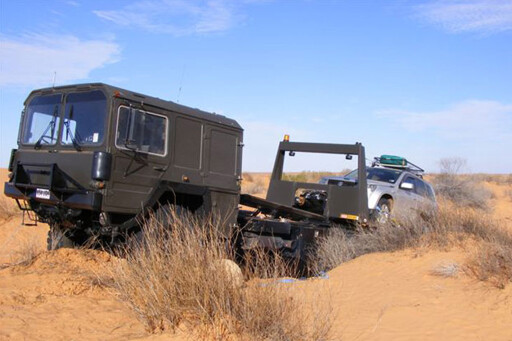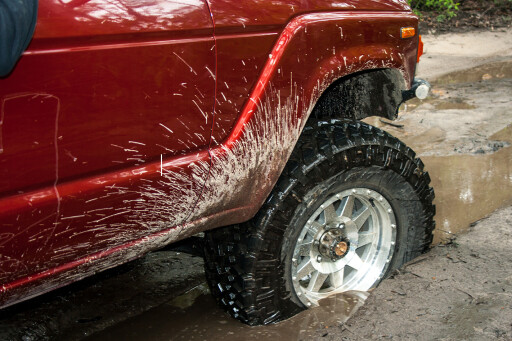
YOU’RE on your favourite beach at dusk attempting to lure barramundi. You notice the tide’s lapping at the wheels of your fourbie parked up the beach, so it’s time to get going. Soon enough you’re bogged to the chassis rails. All you can do is watch your vehicle become swamped with sea water. The situation worsens when you ring your insurance company and find out you’re not covered.
Car insurance companies offer a range of extras, either as part of comprehensive coverage or as an extra-cost cover. Some of the features offered include replacing stolen car keys, replacing a stolen car seat cover, and the reimbursement of a taxi fare after dropping off a vehicle for insurance assessment. Here we’re looking at insurance features that relate to a 4WD that’s set up to go off-road.

Some 4WD modifications cause problems when you need to make a claim. If your vehicle is lifted more than 50mm, for example, you may find that you have no insurance cover because it doesn’t meet your state’s registration requirements – as it’s not legal, insurance companies can refuse a claim. Getting the all-clear with an engineering certificate is an option, but even then don’t assume you’re covered. You’ll have to inform your insurance company and have the modification accepted and noted on the policy.
Insurance companies have a Product Disclosure Statement, which is essentially a document that outlines the insurance company’s obligations to you, and you to them.
Some PDS documents are pretty vague about things like cover for when you’re driving on a beach, off-road tracks or non-gazetted roads. At the time of writing, many insurance companies were struggling with the onslaught of claims from Cyclone Debbie in Queensland and Northern NSW, so we weren’t able to get clarification from them all.
Of the policies that have a clear PDS, or of which we could get clarification, NRMA Insurance, CGU Insurance, Club 4x4 (underwritten by The Hollard Insurance Company), Affinity Insurance Brokers and DGA Insurance (also a broker) will provide coverage for gazetted and ungazetted roads. So if you’re off-roading on private property, for example, and have a crash, you’re covered (provided you have permission to be there).
If you crash and your vehicle isn’t safe to drive, many insurers provide free towing to the nearest repairer. However, imagine you’ve crashed your vehicle somewhere remote, like up in Cape York. That’s when you need to know exactly what a free tow means. NRMA says, “We review motor claims on an individual basis and there is no ‘one size fits all’ approach to how we review our comprehensive cover. In regards to recovery, we can tow your vehicle from where an incident has happened to the closest repairer or safe location.”
 The trouble is it costs $300-$400 per hour for off-road recovery in remote areas, and the risk is that the recovery mightn’t be covered because the insurance company may decide not to cover some or all recovery costs after assessing your individual situation. Get it in writing before you head off on a big trip if it isn’t specified exactly where the insurance company will retrieve your vehicle from.
The trouble is it costs $300-$400 per hour for off-road recovery in remote areas, and the risk is that the recovery mightn’t be covered because the insurance company may decide not to cover some or all recovery costs after assessing your individual situation. Get it in writing before you head off on a big trip if it isn’t specified exactly where the insurance company will retrieve your vehicle from.
Specialist 4WD insurers are much clearer about what they will and will not do for remote recovery. Club 4x4 will reimburse you up to $1500 of recovery costs as part of its comprehensive insurance policy. For an extra fee you can get $30,000 of coverage, which isn’t a ridiculous figure if you’re deep in the outback and it costs $400 per hour to get your vehicle out of there. For breakdowns, this cover will only get your vehicle to the nearest gazetted road.
For crash-damaged vehicles, Club 4x4 will continue on with the vehicle to the nearest repairer as part of the policy coverage. Club 4x4 has an optional breakdown cover for sealed roads, with up to 50km free towing.
Setting up a 4WD to go off-road is expensive – once you add up the cost to buy and fit a bullbar, driving lights, winch, lift kit, UHF radio, snorkel, cargo barrier, rock rails, drawer system and a cargo barrier, the total can easily exceed $20,000. Most comprehensive insurance policies with mainstream insurers will cover these modifications and accessories, but the value they put on them will not be anywhere near what it will cost you to replace them.
It’s worth checking because you might discover the components are individually covered for a very small figure, as they are bundled into the value of the vehicle. Insurance companies have a value range to cover any given vehicle, so don’t expect the insurance value to include the cost of replacing the vehicle and all of its modifications and accessories.
This cover is generally worked out on the market value of a standard vehicle, so it won’t come close to covering the off-road gear you’ve fitted to it. Agreed value is the way to go for an accessorised 4WD, but, as noted above, most polices won’t separate the accessories and modification from the vehicle value.
 Some specialist 4WD companies cover the full replacement cost of modifications and accessories. The Club 4x4 policy, for example, lists modifications and accessories separate to the value of a 4WD.
Some specialist 4WD companies cover the full replacement cost of modifications and accessories. The Club 4x4 policy, for example, lists modifications and accessories separate to the value of a 4WD.
This also applies to camping gear. Many policies will cover $500 of personal items in the vehicle, but not stuff that’s left out in the open. Personal items are often covered to a certain value (usually around $500), but only if they’re in your vehicle at the time.
What about gear not in the vehicle? Club 4x4 will cover personal items or camping gear up to a value of $2000, even if it wasn’t in the vehicle at the time it was damaged or stolen. However, there’s a catch: the coverage is only up to $1000 per item, there’s a maximum of two claims per policy period, and you have to pay a $500 excess fee.
Temporary repairs, vehicle hire and accommodation are other coverage extras that need to be considered when out bush. Many insurers will pay up to around $1000 for temporary repairs to get your vehicle going again (AAMI will only pay $500) so you can get to your destination.
There’s also car hire bundled in comprehensive polices, but not all are equal. In its standard 4WD policy, Club 4x4 or AAMI won’t pay for a hire car if your vehicle has been damaged (although you can get this as an optional extra in both cases), but will provide up to 21 days of vehicle hire.
 For Club 4x4, it’s up to $180 per day if your vehicle has been stolen, for AAMI (if you pay an additional fee), it’s a “vehicle, in our opinion, that is of a similar make and model to your car” for the entire period of the claim. The qualification is, you have to select a vehicle from AAMI’s ‘provider’ and that the rental depot is “within a reasonable distance from your location”. NRMA will pay up to $3000 for car hire after an ‘incident’ as part of its Comprehensive Plus policy, but only at a maximum $95 per day. That amount isn’t going to get you a large 4WD.
For Club 4x4, it’s up to $180 per day if your vehicle has been stolen, for AAMI (if you pay an additional fee), it’s a “vehicle, in our opinion, that is of a similar make and model to your car” for the entire period of the claim. The qualification is, you have to select a vehicle from AAMI’s ‘provider’ and that the rental depot is “within a reasonable distance from your location”. NRMA will pay up to $3000 for car hire after an ‘incident’ as part of its Comprehensive Plus policy, but only at a maximum $95 per day. That amount isn’t going to get you a large 4WD.
If your vehicle cannot be driven after an accident and you’re more than a certain distance from home, many companies will pay up to $500 for travel back home or accommodation while your vehicle is being fixed.
While some mainstream insurers may cover you if you have an accident when off-road, there’s a question mark over whether they will come and get your vehicle. The mainstream insurers also don’t put a high enough value on 4WD modifications and accessories, meaning if those components are stolen or damaged you’re potentially out of pocket by tens of thousands of dollars.

COMMENTS